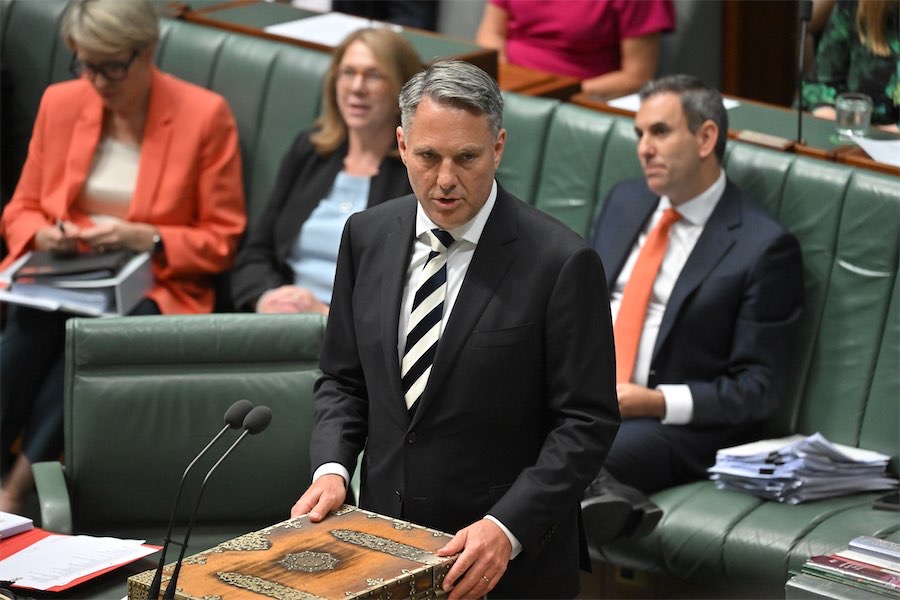“Abolishing stamp duty for the purchase of homes is part of the long-term tax reform of the ACT government. Rates are increasing rapidly, but stamp-duty concessions are moving at a snail’s pace,” writes political columnist MICHAEL MOORE.
GOVERNMENT hand-outs make great political mileage. However, it is taxpayers’ money that’s being distributed and such generosity always needs careful examination.

Who are the winners? Who are the losers? What are the conditions? Who pays? How much is the lily being gilded?
Abolishing stamp duty for the purchase of homes is part of the long-term tax reform of the ACT government. Rates are increasing rapidly, but stamp-duty concessions are moving at a snail’s pace. It is a 20-year program begun in 2012.
The July edition of “Our CBR” features a front-page picture of a young couple and their dog with the headline “Stamp duty abolished for all off-the-plan units up to $500,000”. Then “first home buyers and Canberrans looking to downsize” will save up to $11,400 off the up-front costs of a home purchase.
Why only “off-the-plan” units with a value of up to $500,000? Why just off-the-plan? Where can you buy developments for below $500,000? What about units that are already built? Does this suit investors? What about struggling families who are seeking to buy a home with a garden?
The government argues that this is just the next phase “in the ACT government’s ongoing tax reform program and reflects our commitment to improving housing affordability”.
So much for families! According to Allhomes listings there are only two developments that meet the half-million dollar criteria. They are both in the suburb of Taylor and, elsewhere, I discovered a possibility at Founders Lane in Civic.
The ACT revenue site clarifies that this offer is available to people who do not own another property. At least the taxpayer is not subsidising investors.
So who is really going to benefit?
Young couples, as featured in the picture, are certainly better off – for the moment, provided they are happy living in Taylor!
Developers who are planning on building this style of cheaper units are also winners. There is no restriction on the location or size of the development in which the apartments are constructed – just a purchase off-the-plan. Developers will have much more certainty about how many units they can build. Their financial situation will be much more favourable.
Who are the losers?
This targeted approach omits those who would build homes with gardens. The approach exacerbates the already skyrocketing value of homes on single blocks of land. Perhaps COVID-19 and lockdowns have modified community views on apartment living compared to the traditional home and garden.
Singles or couples who do not have a family or are not intending to have one may be looked after. Those who are hoping to have a family will have to wait.
“The next phase of the stamp duty reductions,” the newsletter tells us, “will be targeted at the lowest property value thresholds for owner-occupier purchases”.
The government recognises the barrier for many people to enter the housing market that is created by excessive stamp duty: “That’s why the next phase of reform will be targeted at increasing the benefit most for people buying lower-value property to live in”.
The term lower-value property will have to be considered very carefully if the government is serious about getting lower-income families into housing.
The current government cut off is $500,000. However, the median house price in Canberra for the March quarter was $927,577. And all indications are that the current quarter has seen another rise.
Domain Senior Research Analyst Dr Nicola Powell pointed out in late April that the “persistent lack of stock coupled with unrelenting high buyer demand and record-low interest rates has continued to fuel this “extremely rare rate of growth”.
At the time Dr Powell predicted that the mean price for Canberra houses would be around a million dollars by the end of June. This presents serious challenges to would-be home owners.
The government is able to provide some support. However, if the mean price of housing jumps around $70,000 in a matter of three months, the impact of abolishing $11,400 of stamp duty may be better than a kick in the pants, but it is much less significant than at the start of the year.
It is time to see much more support with the other levers of government, and the first should be land supply.
Michael Moore is a former member of the ACT Legislative Assembly and an independent minister for health. He has been a political columnist with “CityNews” since 2006.
Who can be trusted?
In a world of spin and confusion, there’s never been a more important time to support independent journalism in Canberra.
If you trust our work online and want to enforce the power of independent voices, I invite you to make a small contribution.
Every dollar of support is invested back into our journalism to help keep citynews.com.au strong and free.
Thank you,
Ian Meikle, editor





Leave a Reply